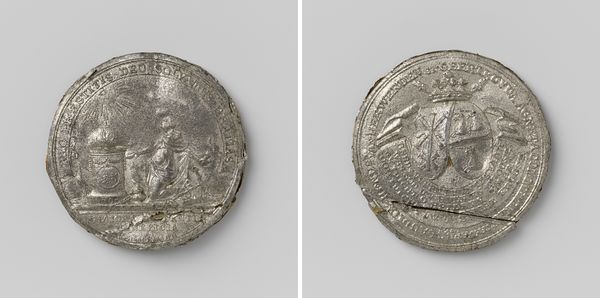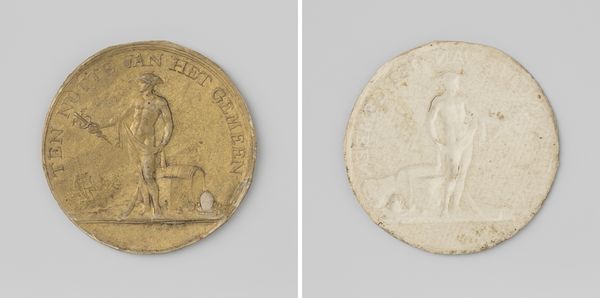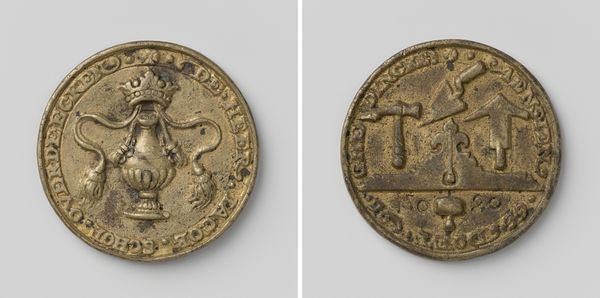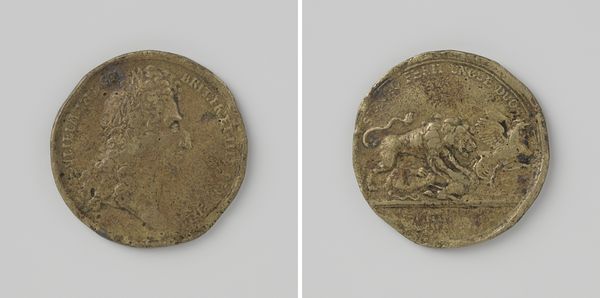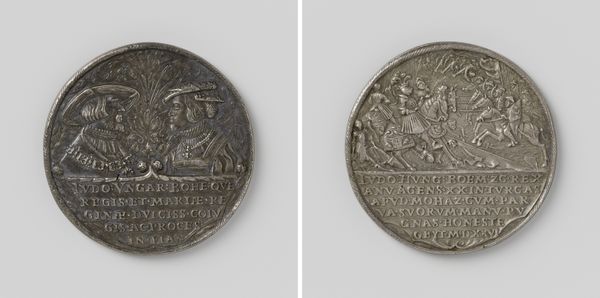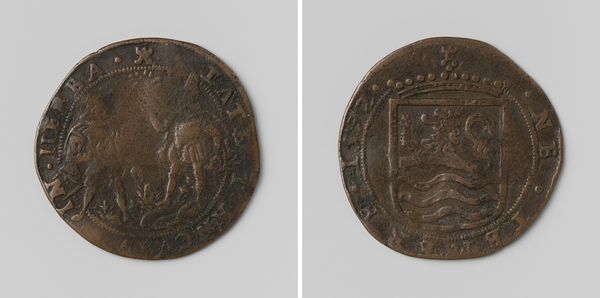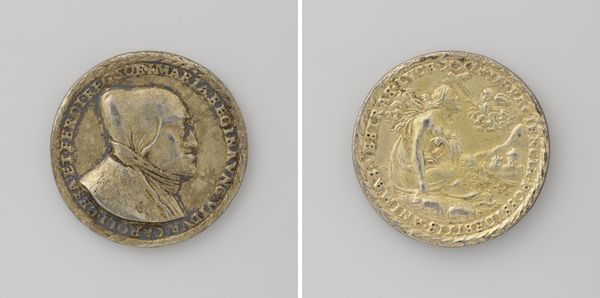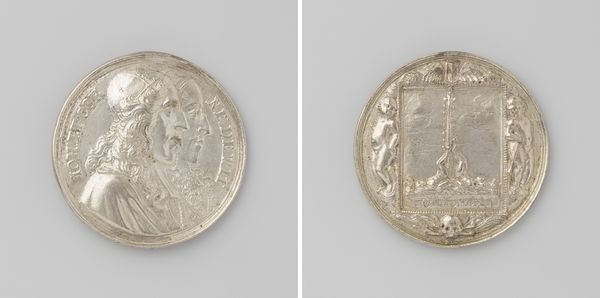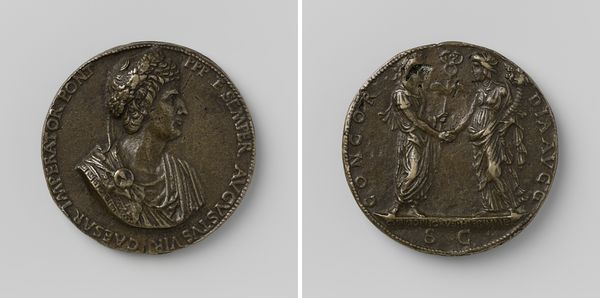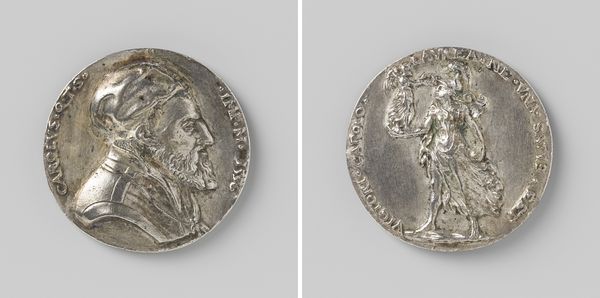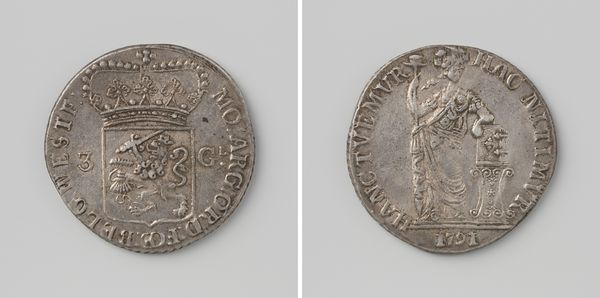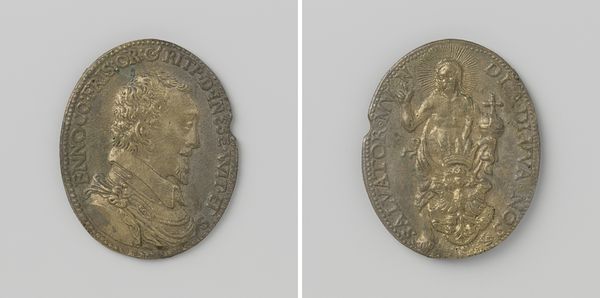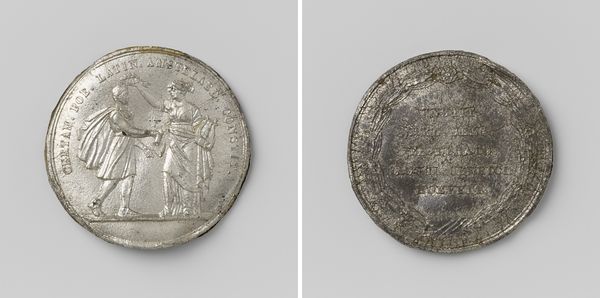
Leopold Willem, aartshertog van Oostenrijk, landvoogd der Spaanse Nederlanden 1647
0:00
0:00
metal, relief, sculpture
#
portrait
#
baroque
#
metal
#
relief
#
sculpture
#
history-painting
Dimensions: diameter 4.1 cm, weight 28.12 gr
Copyright: Rijks Museum: Open Domain
Editor: So, this piece is a metal relief sculpture created in 1647. It's called "Leopold Willem, Archduke of Austria, Governor of the Spanish Netherlands" and it lives here at the Rijksmuseum. It’s such a fascinating little object. It feels... weighty, somehow, important. I wonder, looking at both sides of it, what stands out to you most? Curator: Weighty indeed! I think it is trying to encapsulate power and divinity into a single object, and it mostly succeeds. On one side we have the profile of Leopold Wilhelm himself, surrounded by inscription; while the other has the regalia – lions and cross symbols. These baroque medals are miniature billboards if you will. What strikes you about it? Editor: The symbolism, definitely. I'm intrigued by the animals on the reverse and how that ties to representing power back then. How would someone have interpreted that back in the 17th century versus now? Curator: I imagine our contemporary eyes read these Baroque pieces much differently. Perhaps with irony – they can seem theatrical. However, it would be viewed without irony at the time, more in awe, which made it powerful as a tool of power. Do you see how this could inspire paintings in a larger format? Editor: Definitely! Now that you point that out, it's like a reference image for a much larger painting. The relief gives it a sculptural quality too that adds to that monumental feeling. It’s funny, I hadn’t considered its original reception at all. Curator: Perspective is everything! And knowing something was propaganda allows for a new range of possible appreciation for the skills involved in creation and the intention involved in its historical period. Editor: Thanks, that’s a totally new way of looking at it! I appreciate your point of view on Baroque intention. Curator: My pleasure. Art history is just history using a different language, visual, allegorical, and sometimes obscure – but there is still something tangible that makes for lasting power and value.
Comments
No comments
Be the first to comment and join the conversation on the ultimate creative platform.
